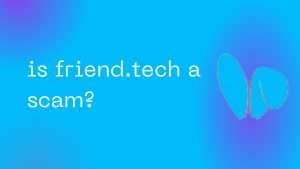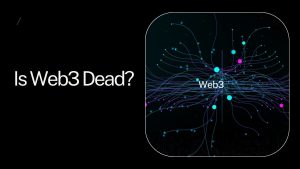The internet has come a long way since its inception in the 1990s. From the early days of static HTML pages to the dynamic web of today, the internet has evolved and transformed in ways that were unimaginable just a few decades ago. The latest evolution of the internet, known as Web3, promises to take things even further by creating a decentralized, trustless, and secure web. But what exactly is Web3, and how does it differ from Web2, the current state of the internet? In this article, we’ll explore the key differences between Web3 vs Web2 and what they mean for the future of the internet.
If you want a comprehensive understanding of web3, read this article
Key Differences between Web2 and Web3
Centralized vs. Decentralized
The most significant difference between Web2 and Web3 is the centralization of power. Web2 is a centralized system where a handful of large corporations dominate the internet, control the data, and monetize it for their profit. This centralization creates a lack of trust and security, which can be seen in data breaches, hacking incidents, and social media manipulation. Web3, on the other hand, is decentralized and built on the blockchain. This means that instead of relying on a central authority, the web is powered by a network of nodes that work together to maintain the network. This decentralization increases transparency, trust, and security by eliminating a single point of failure.
Ownership of Data and Content
In Web2, data and content are owned and controlled by centralized entities, such as social media companies and search engines. Users are often required to give up their ownership rights to access these services. In contrast, Web3 promises a decentralized system where users retain ownership of their data and content. This is achieved through blockchain technology, which allows for secure and trustless ownership records.
The ownership of data and content is a crucial point of differentiation between Web3 vs Web2. In Web3, users can control their data and content through their private keys. This enables them to decide who can access their data and content, and under what conditions. This represents a significant shift from the current Web2 model, where data and content are monetized by centralized entities without the user’s full consent.
Moreover, in Web3, users are incentivized to contribute high-quality data and content through various reward mechanisms. This creates a more equitable system where users can benefit directly from their contributions, rather than relying on centralized entities to monetize their data and content.
Overall, Web3’s approach to ownership of data and content represents a significant departure from the Web2 model. By enabling users to retain ownership of their data and content, Web3 creates a more democratic and user-centric internet.
Interoperability in Web3 vs Web2
Interoperability is the ability of different systems to communicate with each other seamlessly. In Web2, interoperability is limited due to the centralization of power. This means that data and content are often locked within silos, and it’s challenging to move data between different platforms. In Web3, interoperability is facilitated by the blockchain, which enables different platforms to communicate with each other seamlessly. This creates a more connected and integrated web, where data and content can move freely between platforms, enabling more innovation and collaboration.
Trust and Security
Trust and security are essential components of any system, especially when it comes to the internet. In Web2, trust and security are often compromised due to the centralization of power. This means that data breaches, hacking incidents, and social media manipulation are common. In Web3, trust and security are built into the system by design. The blockchain’s decentralized nature makes it difficult to hack or manipulate, and the use of cryptographic algorithms ensures that data is secure and tamper-proof. This creates a more trustworthy and secure web, where users can feel safe and secure in their online interactions.
Monetization
Monetization is the process of making money from data and content. In Web2, monetization is controlled by large corporations that monetize user data for their profit. This creates a situation where users have no control over their data, and they’re not compensated for it. In Web3, monetization is facilitated by the blockchain, which enables users to control their data and monetize it without the need for intermediaries. This creates a more equitable system where users can benefit directly from their data and content. This incentivizes users to produce high-quality data and content, which can benefit the entire ecosystem.
Potential Applications of Web3
The potential applications of Web3 are vast and varied. Here are a few examples of how Web3 can be used:
- Decentralized Finance (DeFi): Web3 enables the creation of decentralized financial systems that are transparent, secure, and trustless. This creates a more equitable financial system that’s not controlled by a handful of large corporations.
- Decentralized Social Networks: Web3 enables the creation of decentralized social networks that are owned and controlled by the users themselves. This creates a more democratic system where users can interact with each other without the need for intermediaries.
- Decentralized Marketplaces: Web3 enables the creation of decentralized marketplaces where users can buy and sell goods and services without the need for intermediaries. This creates a more equitable system where users can benefit directly from their transactions.
Challenges and Limitations of Web3
While Web3 holds great potential for revolutionizing the internet, it is not without its challenges and limitations. These include:
- Technical Complexity: The technical complexity of Web3 poses a significant barrier to entry for users. The decentralized nature of Web3 requires a certain level of technical expertise, which can be a challenge for mainstream adoption.
- Scalability: As Web3 networks grow, maintaining the decentralized nature of the system can become increasingly difficult. Each node on the network needs to maintain a copy of the entire blockchain, which can be a significant challenge as the network grows. This can lead to slow transaction times and high fees.
- Regulation: Web3’s decentralized nature makes it challenging to regulate. This is because there’s no central authority to oversee the network, which can create regulatory challenges. This can lead to legal uncertainty and potential conflicts with existing laws and regulations.
- Interoperability: The lack of interoperability between different Web3 networks and protocols can pose a challenge. This can create silos that limit the potential of Web3 to fully realize its transformative potential.
- Adoption: The success of Web3 ultimately depends on its adoption by mainstream users. However, the lack of user-friendly interfaces and seamless integration with existing systems can make it challenging for non-technical users to adopt Web3 technologies.
- Security: While Web3 is designed to be secure, it is not immune to attacks. The decentralized nature of Web3 makes it challenging to secure against malicious actors. This can lead to hacks, thefts, and other security breaches that can undermine trust in the system.
- Energy Consumption: Web3 technologies, such as blockchain, require significant energy consumption to maintain. This can be a challenge from an environmental perspective and may limit the scalability of the technology.
Want to learn more about web3? Become a certified web3 expert today. learn more
Conclusion
In conclusion, the shift from Web2 to Web3 represents a significant transformation in the way we think about the internet. The key differences between Web3 vs Web2 are apparent, with Web3’s decentralized, trustless, and secure nature promising to revolutionize how we interact with each other online. From the centralization of power to the ownership of data and content, interoperability, trust and security, and monetization, Web3 offers a vast array of potential applications.
However, addressing the challenges and limitations, such as technical complexity, scalability, regulation, interoperability, adoption, security, and energy consumption, will be critical to fully realizing the potential of Web3 vs Web2. As the internet continues to evolve, it’s clear that Web3 will play a significant role in shaping its future, and understanding its differences from Web2 will be essential to navigating this new decentralized landscape.



